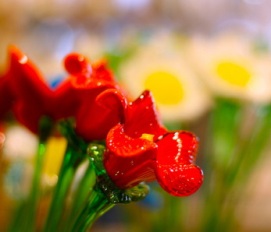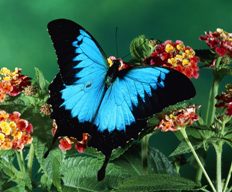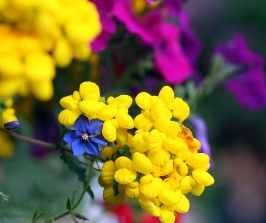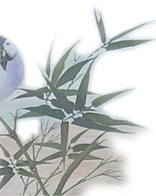|
 Listen to Shirley Singing the Poem in Chinese & English June 17, 2012 Listen to Shirley Singing the Poem in Chinese & English June 17, 2012
 Listen to Shirley Singing the Poem in Chinese & English Feb 25, 2012 Listen to Shirley Singing the Poem in Chinese & English Feb 25, 2012
 Follow the Music to Sing the Poems by Yourself Follow the Music to Sing the Poems by Yourself
 Listen to Shirley Introducing & Explaining the Poem Listen to Shirley Introducing & Explaining the Poem
 Follow Shirley to Read the Poem & Chinese Characters Follow Shirley to Read the Poem & Chinese Characters
 Learn the Meaning of the Poem With Shirley Together Learn the Meaning of the Poem With Shirley Together
 See Shirley Created Picture for the Poem June 14-15, 2012 See Shirley Created Picture for the Poem June 14-15, 2012
 See Shirley Created Picture for the Poem Feb17-24, 2012 See Shirley Created Picture for the Poem Feb17-24, 2012
 See Shirley Created Picture for the Poem Oct 09, 2010 See Shirley Created Picture for the Poem Oct 09, 2010
 See Shirley Created Picture for the Poem August 22, 2010 See Shirley Created Picture for the Poem August 22, 2010
 See Shirley Created Picture for the Poem March 14, 2010 See Shirley Created Picture for the Poem March 14, 2010
 See Shirley Created Picture for the Poem Feb 13, 2010 See Shirley Created Picture for the Poem Feb 13, 2010
 See Shirley Created Picture for the Poem July 19, 2008 See Shirley Created Picture for the Poem July 19, 2008
Original Poem, Lyrics of the Song in Chinese and Pronunciations
You can click on any Chinese Character to open the New Character Board and see its Chinese pinyin, meaning, pronunciation and follow my reading, you can also click on the links to enter the Painting Column, to see more paintings and art notes that I wrote for the poem.
жұҹз•”зӢ¬жӯҘеҜ»иҠұ вҖ”jiДҒnЙЎ pГ n dГә bГ№ xГәn huДҒ
е”җвҖ”tГЎng пјҲ618-907пјү
жқңз”« вҖ”dГ№ fЗ” пјҲ712-770пјү
й»„еӣӣеЁҳ家иҠұж»Ўи№Ҡ вҖ”huГЎnЙЎ sГ¬ niГЎnЙЎ jiДҒ huДҒ mЗҺn xД«,
еҚғжңөдёҮжңөеҺӢжһқдҪҺ вҖ”qiДҒn duЗ’ wГ n duЗ’ yДҒ zhД« dД«гҖӮ
з•ҷиҝһжҲҸиқ¶ж—¶ж—¶иҲһ вҖ”liГә liГЎn xГ¬ diГ© shГӯ shГӯ wЗ”пјҢ
иҮӘеңЁеЁҮиҺәжҒ°жҒ°е•ј вҖ”zГ¬ zГ i jiДҒo yД«nЙЎ qiГ qiГ tГӯгҖӮ
й»„еӣӣеЁҳ家иҠұж»Ўи№Ҡ вҖ”huГЎnЙЎ sГ¬ niГЎnЙЎ jiДҒ huДҒ mЗҺn xД«,
еҚғжңөдёҮжңөеҺӢжһқдҪҺ вҖ”qiДҒn duЗ’ wГ n duЗ’ yДҒ zhД« dД«гҖӮ
з•ҷиҝһжҲҸиқ¶ж—¶ж—¶иҲһ вҖ”liГә liГЎn xГ¬ diГ© shГӯ shГӯ wЗ”пјҢ
иҮӘеңЁеЁҮиҺәжҒ°жҒ°е•ј вҖ”zГ¬ zГ i jiДҒo yД«nЙЎ qiГ qiГ tГӯгҖӮ
The Main Meaning of the Poem and the Lyrics of the Song in English
Finding Flowers Alone by the River
By Du Fu(712-770)
Tang Dynasty (618-097)
Ms. Huang Si's path is covered with blossoms,
Numerous flowers are bending the branches low.
Playful butterflies are dancing, unwilling to leave,
Carefree cute birds are singing вҖңqia qiaвҖқ.
Ms. Huang Si's path is covered with blossoms,
Numerous flowers are bending the branches low.
Playful butterflies are dancing, unwilling to leave,
Carefree cute birds are singing вҖңqia qiaвҖқ.
About the Poet
Du Fu жқңз”« dГ№ fЗ”(712-770) was born in today's Henan province during Tang Dynasty (618-907). He is one of the greatest poets in the history of Chinese poetry.
Du Fu had a very good home education; he had been writing poetry since he was 5 and started to learn Chinese calligraphy when he was 9. He communicated with adults through poetry from the age of 15 or 16.
His first travels were in Wu and YueвҖ”today's Zhejiang and Jiangsu provinces and he knew another equally great poet of Tang DynastyвҖ”Li Bai at the age of about 20. At that time, his poems were very positive and full of dreams.
When he was 22 years old, he failed in the imperial examinations but he stayed in the capital Chang'an cityвҖ”Today's Xi'an for about 10 years, living a very poor life, and he got to know much about the lives of common people. His poetry entered into a new phase, that was Realism.
As a follower of Confucian philosophy, Du Fu cared for the future and fate of the country and he wished to have an opportunity to work for the country;however, it wasn't until he was 44 years old did he have the opportunity to become an officer.
In 755, the Rebellion of An and Shi led the country into a civil war lasting for about 8 years. During that time, Du Fu became a fugitive,experienced a harder and poorer life and his poetry reached its highest peak.In 770, when he was 58 years old and on his way back to his hometown, Du Fu died on a boat.
Du Fu experienced the decline of the Tang Dynasty from its most prosperous times and his poetry reflected the whole of this process, so people said his poetry was вҖңPoetry of Historic SignificanceвҖқ. Meanwhile, he developed the traditional Chinese poetry forms.Either long or short poems, he could write them excellently.
Du Fu's poetry has been influential among poets for about 1,200 years.There are about 1,400 of his poems still in existence.
Enjoy the Poem
This poem was written in 761.After experiencing the hardship in the Rebellion of An and Shi(755-763) which started in Central China, Du Fu went to ChenЙЎdu, Sichuan,where he built a thatched cottage by a stream in the Western Suburbs of Chengdu so that he had a resting place temporarily. With an easy heart, he walked by the river, enjoying the beauty of flowers in the warm spring, and then he wrote seven poems of Qi JueпјҲдёғз»қпјү (a four?line poem with seven characters each line and a strict tonal pattern and rhyming scheme).
Jiang Pan Du Bu Xun Hua is the 6th poem of the group of Qi Jue.
The first two lines: й»„еӣӣеЁҳ家иҠұж»Ўи№Ҡ,еҚғжңөдёҮжңөеҺӢжһқдҪҺвҖ”(HuГЎnЙЎ SГ¬ niГЎnЙЎ jiДҒ huДҒ mЗҺn xД«, qiДҒn duЗ’ wГ n duЗ’ yДҒ zhД« dД«)вҖ”Ms. Huang Si' s path is covered with blossoms,numerous flowers are bending the branches low .
The first line writes about the place where the poet found the flowers. They are just on the road by Ms. Huang Si's house and have covered the road already. The second line describes how the flowers are big and many. they are tier upon tier, so that they have bent the branches low.Both of the two lines emphasize the flowers' quantity and size,and they have covered the road and bent the branches.
The last two lines:з•ҷиҝһжҲҸиқ¶ж—¶ж—¶иҲһ, иҮӘеңЁеЁҮиҺәжҒ°жҒ°е•јвҖ”(liГә liГЎn xГ¬ diГ© shГӯ shГӯ wЗ”, zГ¬ zГ i jiДҒo пҪҷД«пҪҺЙЎ qiГ qiГ tГӯ)вҖ”Playful butterflies are dancing, unwilling to leave, carefree cute birds are singing вҖңqia qia" .
They have attracted the butterfliesвҖң з•ҷиҝһпҪҢпҪүГә пҪҢпҪүГЎпҪҺвҖқвҖ”lingering and dancing over them, not wanting to leave; they fascinated the yellow birds singing among or over them.
By writing about the actions of the butterflies and the sounds of the birds,the poet hints to us how beautiful the flowers are!
The phrase вҖңж—¶ж—¶иҲһпҪ“пҪҲГӯ пҪ“пҪҲГӯ пҪ—З”вҖқвҖ”often dance writes about how the butterflies dance; and вҖң вҖҳжҒ°жҒ°'е•јпҪ‘пҪүГ пҪ‘пҪүГ пҪ”ГӯвҖ”sing вҖҳqia qia' вҖқwrites what the birds sing, with the visual language, and helps us вҖңseeвҖқ a beautiful view,вҖңsmellвҖқ the fragrance of the flowers,вҖңlisten toвҖқthe wonderful sounds and вҖңfeelвҖқ the emotion of happiness. These not only endue the little poem with a dynamic feeling, but also give the poem a very bright and fluent rhythm.
Because the poet himself was happy at the time to find the flowers, he felt everything in the happiness, the lovely butterflies dancing for him and carefree cute yellow birds singing for him.
Through empathizing the poet's feeling towards the butterflies and birds, endowing them with human feelings, this poem blends the object and subject, natural scenery and human feeling together, and creates its own artistic result, brings us to the little path of 1,250 years ago, helps us to enjoy the beautiful natural scenery as well as shares the poet's feeling of delight.
Inspiration:
Projecting the poet's happy feelings onto the natural things that he was writing about is the main characteristic of this poem.
The transfer of the human feeling to some object, can help us create some wonderful art work, such as this poem. However, in the real world,we should never bring any personal feeling into work. Especially,we should not transfer any bad emotion into management art.
Years ago, a friend gave up her opportunity to study abroad, because she wanted to do her best for the company that she had given her best time to. Instead of going to the consulate to get her visa at the appointed time, she wrote a work report over several weekends and many nights. With an excited heart, she gave her report to her boss on the Monday morning. Instead of getting any appreciation, her boss frowned. With so much surprise, disappointment and frustration, she re?made the appointment at the consulate, got her visa and left for the other side of the ocean.
Later, her boss apologized to her and explained that he had been in big trouble that day, so that he could not help losing his temper with the one who entered his office first. However, things could not be retrieved.
Transfering feeling is a good method in art creation;but it is not a good thing to take personal feeling to work. Do you agree?
To this day, I still remember how I recited this poem with an enjoyable heart on a little path in the campus of my first university on a sunny morning. Then I translated this poem into English and created a piece of music for it in 2006. Since then, I have created more than 10 paintings for it. But now, I would like to show you the last one that is my assignment at Chinese National Academy of Arts in 2012. I do hope my effort will be of some help for you in learning Chinese language and culture.
If you have any questions, comments or suggestions, please write to shirley@ebridge.cn .
Shirley Yiping Zhang
Sep 15, 2012
-------------------------------
Below is the content that I did before, I would like to keep here as a memory:
 About the Poet:Du Fu (712 - 770) was born in todayвҖҷs Henan province in Tang Dynasty (618 ? 907). He is one of the greatest poets in Chinese poetry history. About the Poet:Du Fu (712 - 770) was born in todayвҖҷs Henan province in Tang Dynasty (618 ? 907). He is one of the greatest poets in Chinese poetry history.
Du Fu got a very good home education, he had been creating poem since he was five; and writing Chinese calligraphy since he was nine; He communicated poems with the adults when he was 15 or 16 years old.
He had his first travel in Wu, Yue -- Today's Zhenjiang and Jiangsu provinces and knew the another greatest poet - Li Bai when he was about 20 years old. At that time, his poems were very positive and full of the dreams.
Following the ConfucianismвҖҷs philosophy, Du Fu cared for the future and fate of the country and he wanted to do his best for the country, but, his dreams could not be true in whole of his life. When he was 22 years old, he failed in the imperial examinations and then, he stayed in the capital -- Changan -- Today's Xian for about 10 years living a very poor life and knew much more about common people's life.
His poetry entered a new phase and started his realism creating.
Then, in A.D.755, Rebellion of An and Shi happened, it led the country into the civil war for about 8 years. During the time, Du Fu became a fugitive and experienced harder and poorer life. His poetry reached the highest peak. In A.D.770, when he was 58 years old, on his way back hometown, Du Fu died on a boat.
Du Fu experienced the history ___ how the Tang Dynasty went down from its strongest times in person.His poetry reflected the whole of this process. So, people said his poetry is just вҖңpoetry of historic significance".
We say that Du Fu is one of the greatest poets, that is mainly because he developed the traditional Chinese poetry forms. No matter how long or short the poems were, he could write them excellently.
Du Fu has been affecting the poets for about 1200 years since his times until now... There are about 1400 his poems in the world right now.
Comments about the Poem:
This poem was created by Du Fu (712 - 770) in 761. After experiencing the hard time in the Rebellion ( 755 ? 763) of An and Shi starting from Central China, Du Fu came to Chendu , Sichuan . Finally, there, he built a thatched cottage by a stream in the West Suburbs of Chendu and had a resting place temporarily, with an easy heart, he walked by the river, enjoying the beauty of flowers in the warm spring, and then he wrote seven Qi Jue ( a four-line poem with seven characters to a line and a strict tonal pattern and rhyme scheme).
Jiang Pan Du Bu Xue Hua is the 6th poem of the group of the Qi Jue.
This is a little poem to describe scenery. On a little path, there are so many beautiful blossoms, the numerous flowers have bended the branches low. Over the flowers, there are playful butterflies and the carefree cute yellow birds, they are enjoying the beauty in the spring breeze with the poet together; they are dancing and singing with delightful вҖң hearts вҖқ the same with the poet so cheerful that they would not leave at all...
With the Chinese characters вҖң shi shi wu ? often dance"to write how the butterflies are dancing; вҖңQia Qia ti -- sing вҖҳ Qia QiaвҖҷ вҖқ to write how the birds are singing, with the language that is colloquial style full of the active feelings ,to help readers вҖңSee вҖқ the beautiful view, toвҖң Smell вҖқ the fragrance of the flowers, toвҖң Listen to вҖң the wonderful sounds and вҖң FeelвҖқ the emotion of happiness. It has not only endued the little poem a dynamic feeling, but also they have given the poem much sprightly and fluent rhythm.
 The first line: вҖң Huang Si Niang jia hua man xi ?The path of Mrs. Huang Si is covered with blossoms вҖқ вҖң xi ? little path вҖқ points out the place is on the little path by Mrs. Huang SiвҖҷ s home. вҖң Hua Manxi вҖқ means so manyblossoms have covered the little path. This line uses the personвҖҷs name in the poem, it is a little bit like ballad, expressing a strong life sentiment. The first line: вҖң Huang Si Niang jia hua man xi ?The path of Mrs. Huang Si is covered with blossoms вҖқ вҖң xi ? little path вҖқ points out the place is on the little path by Mrs. Huang SiвҖҷ s home. вҖң Hua Manxi вҖқ means so manyblossoms have covered the little path. This line uses the personвҖҷs name in the poem, it is a little bit like ballad, expressing a strong life sentiment.
The second line: вҖң Qian duo wanduo ya zhi di ? numerous flowers are bending the branches low вҖқ .вҖң Qian duo wan duo вҖқ means thousands and tens thousands of flowers. It has described the number of flowers is so many. вҖң ya вҖқ means weight down; вҖң zhi вҖқ means branch; вҖң di вҖқ means low. With simple but visualized and lifelike language, this line writes out how the spring flowers are big and many, tier upon tier, so that they have bended the branches low.
The third line: вҖң Liu lian xi die shishi wu ? playful butterflies are dancing, unwilling to leaveвҖқ . вҖңLiulianвҖқ meanst lingering, to describe how the butterflies fly round and round and they are unwilling to leave. It has hinted how the flowers are beautiful and bright; since the flowers are so lovely that attract the butterflies,and since the butterflies are so lovely and attract the poet, naturally, people who are enjoying the flowers, butterflies and the beautiful view are also lingering and unwilling to leave,at the same time to write out how the flowers are beautiful, bright and fragrant.
The fourth line: вҖң Zi zai jiao ying jia jia ti ? carefree cute birds are singing вҖҳ qia qiaвҖҷ вҖқ. вҖң Qiqi tiвҖқ writes the sound of the birds. When the poet is enjoying the beauty of the flowers, the spring breeze sends a string of the singing of the yellow birds; it awakes the poet who is intoxicated in the blossoms. At this time, readers can also really understand what is the meaning of the Chinese idiom вҖңniЗҺo yЗ” huДҒ xiДҒng -- songs of birds and scent of flowers or birds'twitter and fragrance of flowers. вҖқ
Just because the poet itself was in happiness, then he thought the yellow birds were singing for him.As same as the third line to say the butterflies enjoy the spring flowers, so they are lingering over the blossoms and unwilling to leave, both of the two lines use the way to empathize the human feeling to the nature. With this method, this poem blends the object and subject, natural scenery and human feeling together, creates its own artistic result.
There are many poems to write this kind of theme in the Glorious Age of Tang Dynasty, but there were not many as this poem to depict so meticulous with the especially bright colors.
When I read this poem years ago, I felt that I myself was led to the little path 1250 years ago, enjoying the beautiful natural scenery as well as the poetвҖҷs feeling .Therefore, since 2006 to 2010, I have created a piece of music and 4 paintings to match this poem, then, in 2012, with the good help from Mr. Mike J from U.K., Mr. William G., Dr. Dennis H. from U.S.A., Pref. Weiye M, Mrs. Xiaogang Z. Mr. Tong W. and Mr. Wengqing L. from China, I re-translated this poem, re-wrote the music, re-sang the poem and re-painted two new paintings for this poem in CANN.
I do hope our effort will be of some help with you to learn about Chinese language and cultures.
Main Meaning of the Poem
Find Flowers by the River Alone
By Du Fu ( Tang )
Mrs.Huang Si's path is covered with blossoms,
Numerous flowers are bending the branches low.
Playful butterflies are dancing, unwilling to leave,
Carefree cute birds are singing "Qia Qia".
Chinese Characters & Pronunciations
You can clink any Chinese Character to open the New Character Board and to see its Chinese pinyin, meaning, pronunciation and follow me to read it, also, you can hit the links over to enter the Painting Column,or you can directly enter the art notes on the painting that I created for this poem to see my painting and art notes for the poem
жұҹз•”зӢ¬жӯҘеҜ»иҠұ -- Jiang Pan de Bu Xun Hua
жқңз”« ( е”җ )-- Tang Du Fu (Tang )
й»„еӣӣеЁҳ家иҠұж»Ўи№Ҡ -- HuГЎng SГ¬niГЎng jiДҒ huДҒ mЗҺn xД«,
еҚғжңөдёҮжңөеҺӢжһқдҪҺ -- qiДҒn duЗ’ wГ n duЗ’ yДҒ zhД« dД«гҖӮ
з•ҷиҝһжҲҸиқ¶ж—¶ж—¶иҲһ -- LiГәliГЎn xГ¬diГ© shГ¬shГ¬ wЗ”пјҢ
иҮӘеңЁеЁҮиҺәжҒ°жҒ°е•ј -- zГ¬zГ i jiДҒo yД«ng QiГ QiГ tГӯгҖӮ
 If you have any questions, comments and suggestions, please write to shirley@ebridge.cn ,You are welcome. If you have any questions, comments and suggestions, please write to shirley@ebridge.cn ,You are welcome.
Shirley Yiping Zhang
March 2, 2012/Feb 15, 2010/ July 2008/Oct, 2007/Jun 10,2006
|

